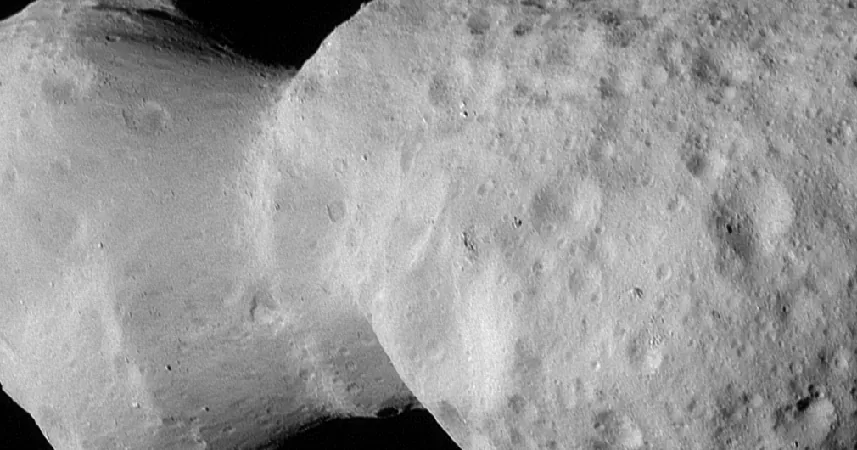
NASA's Lucy Spacecraft Snaps Stunning Images of Peanut-Shaped Asteroid During Blazing 30,000 MPH Flyby
2025-04-22
Author: Wei
In a breathtaking display of cosmic photography, NASA's Lucy spacecraft has sent back dazzling images of a peculiar asteroid—one that bears a striking resemblance to a lumpy peanut!
Released just a day after its astonishing flyby at a blistering speed of over 30,000 miles per hour, these images are a sneak peek into what lies ahead. This encounter serves as a crucial warm-up for future missions where Lucy will edge closer to the mysterious Trojan asteroids near Jupiter.
Surprisingly larger than initially expected, this cosmic wanderer measures about 5 miles in length and 2 miles at its widest point. Its unique shape means the spacecraft couldn't capture the entire asteroid in one shot with the initial images.
To make things even more exciting, NASA shared a captivating timelapse—showing the asteroid slowly spinning, giving us an almost magical view of its rotation during Lucy's high-speed pass.
In a thrilling encounter, Lucy zoomed within a mere 600 miles of the asteroid, officially dubbed Donaldjohanson, located in the main asteroid belt between Mars and Jupiter. The asteroid is named after the renowned paleontologist who discovered the famous fossil Lucy in Ethiopia 50 years ago.
Hal Levison, the principal investigator for Lucy, highlighted the significance of this asteroid's intricate geology, stating, "Asteroid Donaldjohanson has strikingly complicated geology. Detailed studies will unveil critical information about the building blocks and collisions that shaped planets in our solar system."
Since its launch in 2021, Lucy has been on a mission to explore the enigmatic Trojan asteroids, with eight more flybys planned through 2033.
Tom Statler, program scientist for the mission, emphasized the remarkable capabilities of the Lucy spacecraft, stating, "These early images of Donaldjohanson are showcasing Lucy as an incredible engine of discovery. The potential to unlock new insights into the history of our solar system when we finally reach the Trojan asteroids is immense."




 Brasil (PT)
Brasil (PT)
 Canada (EN)
Canada (EN)
 Chile (ES)
Chile (ES)
 Česko (CS)
Česko (CS)
 대한민국 (KO)
대한민국 (KO)
 España (ES)
España (ES)
 France (FR)
France (FR)
 Hong Kong (EN)
Hong Kong (EN)
 Italia (IT)
Italia (IT)
 日本 (JA)
日本 (JA)
 Magyarország (HU)
Magyarország (HU)
 Norge (NO)
Norge (NO)
 Polska (PL)
Polska (PL)
 Schweiz (DE)
Schweiz (DE)
 Singapore (EN)
Singapore (EN)
 Sverige (SV)
Sverige (SV)
 Suomi (FI)
Suomi (FI)
 Türkiye (TR)
Türkiye (TR)
 الإمارات العربية المتحدة (AR)
الإمارات العربية المتحدة (AR)